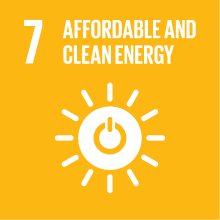COURSEWORK OF SPANISH-ITALIAN NEGOTIATIONS 1
- Academic year
- 2023/2024 Syllabus of previous years
- Official course title
- ESERCITAZIONI DI TRATTATIVA SPAGNOLO - ITALIANO 1
- Course code
- LT5150 (AF:459085 AR:270169)
- Modality
- On campus classes
- ECTS credits
- 0 out of 6 of NEGOTIATION SPANISH-ITALIAN 1
- Subdivision
- Surnames A-L
- Degree level
- Bachelor's Degree Programme
- Academic Discipline
- L-LIN/07
- Period
- 2nd Semester
- Course year
- 2
- Where
- TREVISO
- Moodle
- Go to Moodle page
Contribution of the course to the overall degree programme goals
An overview of the main application areas of liaison interpreting (e.g. business negotiations, interviews, mediation in hospitals, contacts at trade fairs, meetings at public institutions, etc.) will therefore be presented throughout the course, accompanied by the necessary theory-based and practical tools in order for students to acquire and develop:
- essential skills to enhance concentration, active listening, and memory skills;
- the ability to understand, analyze, synthesize, and translate information into another language;
- strategies for interacting effectively in different communication settings simulating liaison interpreting contexts;
- a strong sensitivity for self-learning and constant improvement at a language and extra-linguistic level, as well as regarding speech effectiveness in public speaking, tone of voice, and body language.
Expected learning outcomes
Having dealt at first with activities such as sight translation, memorization and the introduction of the prise de notes technique, the student will then be able to listen, memorise - also with the support of his/her own notes - and interpret oral sources from Spanish into Italian and vice versa.
Typical communicative contexts will be introduced in consideration of the economic, social and cultural development of the territory, ranging from art to tourism, from commercial negotiations to product presentations, without neglecting the typical areas of cultural mediation (hospital, education, safety, etc.) and interviews with people from the world of culture, sport, entertainment, and so on.
The student will be able to search for specific linguistic and extralinguistic information on the basis of the briefing received, as well as to independently elaborate and update specific glossaries for the different semantic fields covered throughout the lessons.
In addition to improving their language skills, by the end of the course students will also have grasped the relevance of their extralinguistic skills, of being informed about current affairs, of being able to detect and correctly interpret realia, cultural references, proverbs, etc.
The student will also have acquired basic information on the ethical and deontological aspects of professional interpreting.
Pre-requirements
However, a native speaker level of Italian and an excellent knowledge of Spanish are required, along with an adequate cultural background in both languages of study.
Contents
A negotiation is articulated in dialogic exchanges whose duration and difficulty may vary depending on the subject, context, parties involved and so on, presenting different levels of formality, specificity and register; as a result, each interpreting session will be first introduced by the relevant context and topic, followed by brainstorming on the expected key words and semantic field, thus initiating the student to the acquisition and consolidation of effective techniques in the preliminary preparation and then in the oral interaction, specifically in liaison interpreting.
As preparatory activities, in the classroom we will work on active listening, memorising and searching for key words and synthesis skills. To achieve these objectives, techniques such as shadowing and sight translation will be introduced.
The student will be made aware of the importance of clear, complete, correct and accurate oral delivery in both languages of study. Subsequently, in order to increase the interpreter's degree of accuracy, the basics of note-taking will be introduced.
Various situations will be simulated following an interactive dialogue prepared in advance by the lecturer; the topic will be briefed in the previous lesson in order to stimulate documentary and individual study and the autonomous drafting of glossaries. The course therefore provides for the guided analysis of some realistic contexts for liaison interpreting, e.g. a business negotiation, a meeting in a social or health context, an interview with a designer presenting a product, a tour operator, an art critic, or prominent figures from the world of culture, music, sport, and so on. It should be noted in this regard that the lexicon covered in this course usually requires the student to have a good general cultural level, without, however, encroaching on any specific technical vocabulary.
Students will also be made aware of the importance of being able to adopt the appropriate register according to the parties involved, the level of formality, and the subject matter of the interpreting situation presented, as well as the importance of expanding their cultural background and staying informed about current events.
Referral texts
- Russo M., Mack G. (eds.). Interpretazione di trattativa. La mediazione linguistico-culturale nel contesto formativo e professionale. Milan, Hoepli, 2005.
- Lasorsa A., Manuale di teoria dell'interpretazione consecutiva. Padua, Piccin, 1995.
- Bosch March C., Técnicas de interpretación consecutiva: la toma de notas. Editorial Comares, 2013.
Further references to useful websites, web pages, and articles in Spanish will be provided in class and uploaded to moodle where possible.
Assessment methods
The duration of the oral interpreting test will be between 5 and 8 minutes. The student may use note-taking.
Type of exam
Teaching methods
Students will be invited with due notice to draft a dialogue in pairs on a topic agreed upon with the lecturer, simulating a mock meeting, its relevant context and a profile of the parties involved. They will then present it to their classmates who will subsequently interpret the role-played meeting.
Guidelines and strategies for perfecting public speaking skills such as tone of voice, posture, and body language will also be provided.
Further information
2030 Agenda for Sustainable Development Goals
This subject deals with topics related to the macro-area "Climate change and energy" and contributes to the achievement of one or more goals of U. N. Agenda for Sustainable Development


